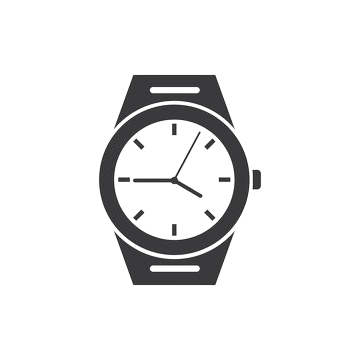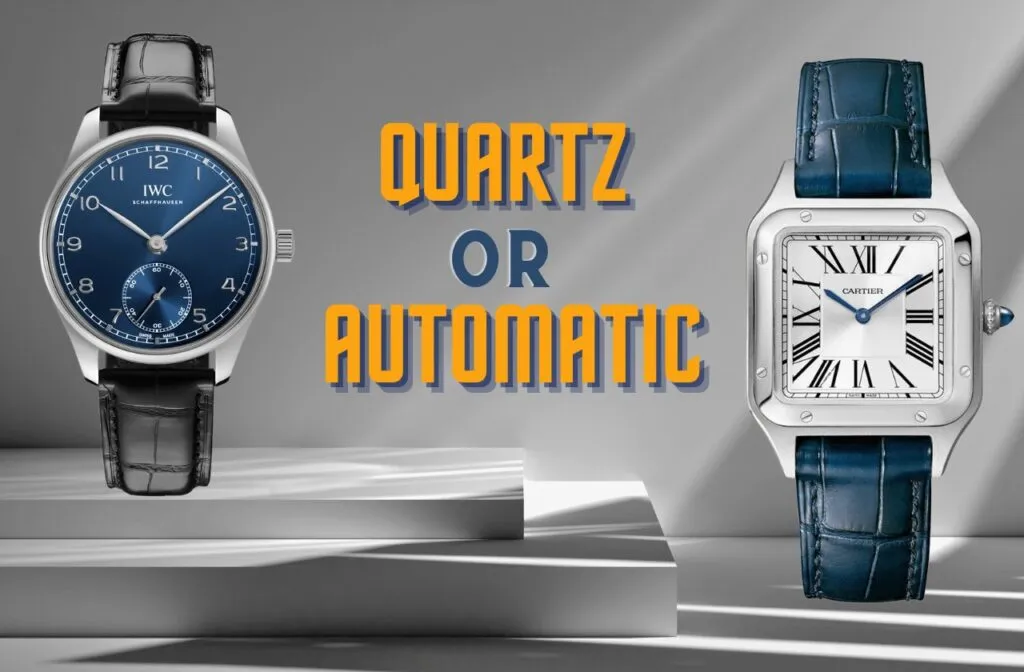Introduction
In the world of horology, the choice between automatic and quartz watches often sparks passionate debates among enthusiasts and novices alike. Each type of movement brings its own set of characteristics, history, and appeal. Understanding the differences between automatic and quartz watches is essential in making an informed decision about which timepiece suits your lifestyle, preferences, and budget.
Chapter 1: The Mechanics Behind Automatic Watches
1.1 How Automatic Watches Work
Automatic watches, also known as self-winding watches, operate based on mechanical movements. They rely on the energy generated from the wearer’s wrist movements to power the watch. Inside an automatic watch, a rotor moves with the motion of the wearer’s arm, winding the mainspring and storing energy to keep the watch ticking.
1.2 Craftsmanship and Tradition
Explore the intricate craftsmanship involved in creating automatic watches, emphasizing the artistry of watchmaking and the centuries-old traditions that define mechanical timepieces.
1.3 Prestige and Luxury
Discuss the allure of automatic watches in luxury and prestige, exploring iconic brands known for their mechanical mastery and heritage, such as Rolex, Patek Philippe, and Omega.
1.4 Maintenance and Longevity
Detail the care and maintenance required for automatic watches, including periodic servicing to ensure optimal performance and longevity of the timepiece.

Chapter 2: The Precision of Quartz Watches
2.1 The Quartz Crystal
Explain the quartz movement’s reliance on a battery-powered oscillator regulated by a quartz crystal. Discuss how quartz technology enables precise timekeeping and minimal maintenance.
2.2 Evolution and Popularity
Trace the history of quartz watches from their revolutionary impact during the Quartz Crisis of the 1970s to their current dominance in the consumer market. Highlight the affordability and accessibility of quartz timepieces.
2.3 Practicality and Convenience
Discuss the practical advantages of quartz watches, including their accuracy, reliability, and low maintenance requirements compared to automatic counterparts.
2.4 Innovation and Modern Features
Explore how modern quartz watches incorporate advanced features such as solar power, radio-controlled time synchronization, and smartwatch capabilities.
Chapter 3: Choosing Between Automatic and Quartz Watches
3.1 Lifestyle Considerations
Guide readers in assessing their lifestyle needs and preferences when selecting between automatic and quartz watches. Consider factors like daily wear, activities, and professional settings.
3.2 Aesthetics and Design
Compare the design aesthetics of automatic and quartz watches, from classic elegance to contemporary styles, appealing to different tastes and fashion sensibilities.
3.3 Investment vs. Practicality
Help readers weigh the investment value of automatic watches against the practicality and cost-effectiveness of quartz watches, considering long-term ownership and resale potential.
3.4 Personalization and Customization
Discuss how both types of watches offer opportunities for personalization and customization, whether through limited editions, bespoke designs, or interchangeable straps.
Chapter 4: Case Studies and Expert Insights
4.1 Case Study: Choosing the Right Watch for Different Scenarios
Present hypothetical scenarios and recommend suitable automatic and quartz watches based on functionality, durability, and style requirements.
4.2 Expert Insights: Watch Collectors and Enthusiasts
Interview watch collectors, horologists, and industry experts to provide diverse perspectives on the appeal and practicality of automatic and quartz watches.
Chapter 5: Conclusion
Summarize the key points discussed throughout the article and provide actionable advice for readers contemplating their watch purchase decision. Encourage readers to prioritize personal preferences, lifestyle considerations, and long-term satisfaction when choosing between automatic and quartz watches.
Final Thoughts
Automatic and quartz watches each offer distinct advantages and appeal to different audiences. Whether you prioritize the craftsmanship and tradition of mechanical movements or the precision and practicality of quartz technology, understanding these differences will empower you to make an informed decision that aligns with your individual style and preferences in the world of watch technology.
By exploring the nuances of automatic and quartz watches comprehensively, this article aims to equip readers with the knowledge and insights necessary to navigate the diverse landscape of timepieces and find the perfect watch to complement their lifestyle and personal taste.
3.5



